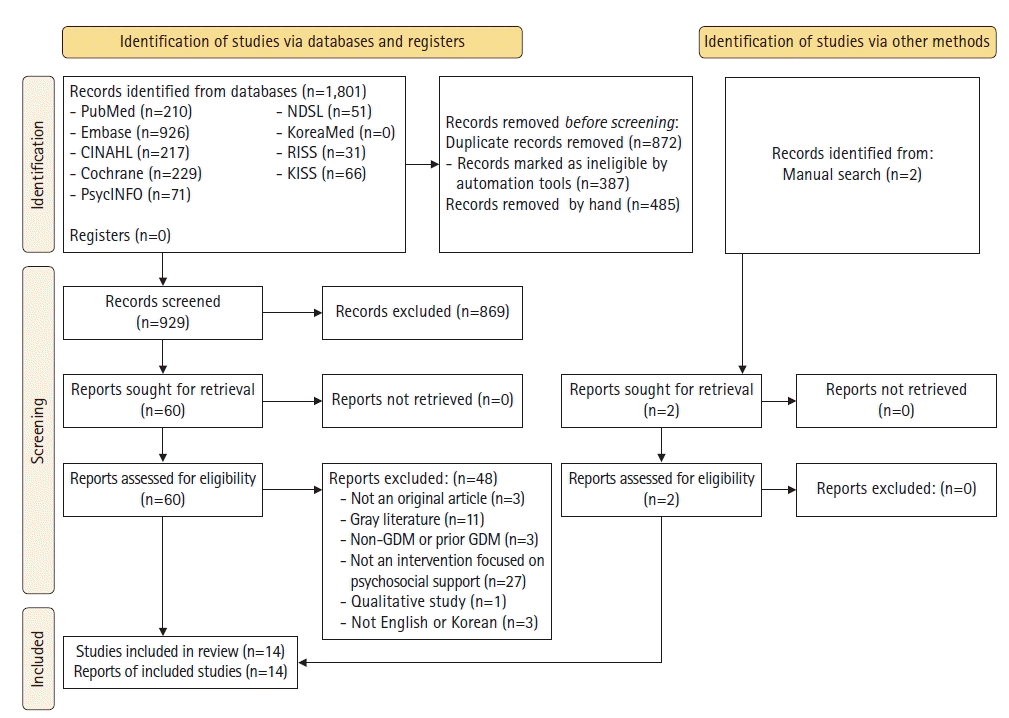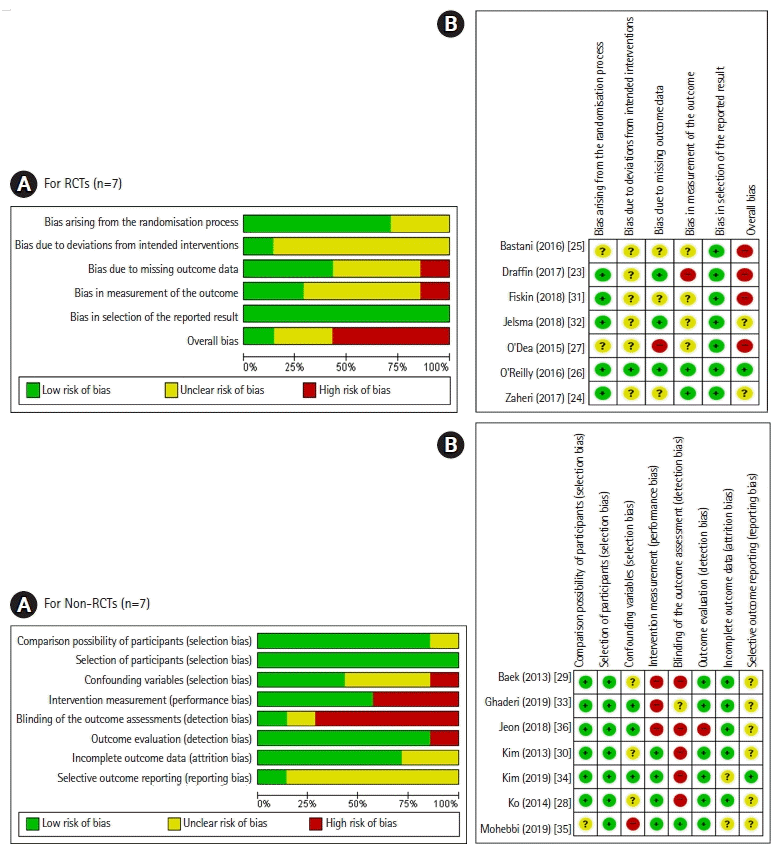3. Ozuguz U, Isik S, Berker D, Arduc A, Tutuncu Y, Akbaba G, Gokay F, et al. Gestational diabetes and subclinical inflammation: evaluation of first year postpartum outcomes. Diabetes Res Clin Pract. 2011; 94(3):426–433.
https://doi.org/10.1016/j.diabres.2011.08.024.

4. American Diabetes Association. 13. Management of diabetes in pregnancy: Standards of Medical Care in Diabetes-2018. Diabetes Care. 2018; 41(Suppl 1):S137–S143.
https://doi.org/10.2337/dc18-S013.
5. Cunningham FG, Leveno KJ, Bloom SL, Rouse D, Spong CY. Williams obstetrics. 25th ed. New York: McGraw-Hill Professional;2018. p. 1718–1752.
9. Sklempe Kokic I, Ivanisevic M, Biolo G, Simunic B, Kokic T, Pisot R. Combination of a structured aerobic and resistance exercise improves glycaemic control in pregnant women diagnosed with gestational diabetes mellitus. A randomised controlled trial. Women Birth. 2018; 31(4):e232–e238.
https://doi.org/10.1016/j.wombi.2017.10.004.

11. Katon JG, Russo J, Gavin AR, Melville JL, Katon WJ. Diabetes and depression in pregnancy: is there an association? J Womens Health (Larchmt). 2011; 20(7):983–989.
https://doi.org/10.1089/jwh.2010.2662.

12. Lydon K, Dunne FP, Owens L, Avalos G, Sarma KM, O’Connor C, et al. Psychological stress associated with diabetes during pregnancy: a pilot study. Ir Med J. 2012; 105(5 Suppl):26–28.
14. Lee SS, Park JS, Lee SY, Oh MA, Choi HJ, Song MY. The 2015 national survey on fertility and family health and welfare. Sejong: Korea Institute for Health and Social Affairs;2016. p. 201–204.
15. Kaiser B, Jeannot E, Razurel C. Determinants of health behaviors after gestational diabetes mellitus: a prospective cohort study in Geneva. J Midwifery Womens Health. 2016; 61(5):571–577.
https://doi.org/10.1111/jmwh.12486.

17. Bidwell S, Jensen MF. Etext on Health Technology Assessment (HTA) Information Resources. Chapter 3: Using a search protocol to identify sources of information: The COSI model [Internet]. Bethesda, MD: U.S. National Library of Medicine; 2003 [updated 2003 Jun 14; cited 2018 Aug 8]. Available from:
https://www.nlm.nih.gov/archive/20060905/nichsr/ehta/chapter3.html#COSI.
18. International Association of Diabetes and Pregnancy Study Groups Consensus Panel; Metzger BE, Gabbe SG, Persson B, Buchanan TA, Catalano PA, et al. International association of diabetes and pregnancy study groups recommendations on the diagnosis and classification of hyperglycemia in pregnancy. Diabetes Care. 2010; 33(3):676–682.
https://doi.org/10.2337/dc09-1848.

20. Hoffman L, Nolan C, Wilson JD, Oats JJ, Simmons D. Gestational diabetes mellitus--management guidelines. The Australasian Diabetes in Pregnancy Society. Med J Aust. 1998; 169(2):93–97.
21. Sterne JA, Savović J, Page MJ, Elbers RG, Blencowe NS, Boutron I, et al. RoB 2: a revised tool for assessing risk of bias in randomised trials. BMJ. 2019; 366:14898–51.
https://doi.org/10.1136/bmj.l4898.

22. Health Insurance Review& Assessment Service (HIRA). DAMI & risk of bias assessment tool for non-randomized studies (RoBANS) 2.0 for non-randomized controlled trial. Seoul: HIRA;2013. p. 31–51.
23. Draffin CR, Alderdice FA, McCance DR, Maresh M, Harper R, Patterson CC, et al. Impact of an educational DVD on anxiety and glycaemic control in women diagnosed with gestational diabetes mellitus (GDM): a randomised controlled trial. Diabetes Res Clin Pract. 2017; 126:164–171.
https://doi.org/10.1016/j.diabres.2017.02.016.

24. Zaheri H, Najar S, Abbaspoor Z. Effectiveness of cognitive-behavioral stress management on psychological stress and glycemic control in gestational diabetes: a randomized controlled trial. J Matern Fetal Neonatal Med. 2017; 30(11):1378–1382.
https://doi.org/10.1080/14767058.2016.1214699.

25. Bastani F. Effect of acupressure on maternal anxiety in women with gestational diabetes mellitus: a randomized clinical trial. Clin Nurs Res. 2016; 25(3):325–341.
https://doi.org/10.1177/1054773815579344.

26. O’Reilly SL, Dunbar JA, Versace V, Janus E, Best JD, Carter R, et al. Mothers after gestational diabetes in Australia (MAGDA): a randomised controlled trial of a postnatal diabetes prevention program. PLoS Med. 2016; 13(7):e1002092.
https://doi.org/10.1371/journal.pmed.1002092.

27. O’Dea A, Tierney M, McGuire BE, Newell J, Glynn LG, Gibson I, et al. Can the onset of type 2 diabetes be delayed by a group-based lifestyle intervention in women with prediabetes following gestational diabetes mellitus (GDM)? findings from a randomized control mixed methods trial. J Diabetes Res. 2015; 2015:798460.
https://doi.org/10.1155/2015/798460.

28. Ko JM, Lee JK. Effects of a coaching program on comprehensive lifestyle modification for women with gestational diabetes mellitus. J Korean Acad Nurs. 2014; 44(6):672–681.
https://doi.org/10.4040/jkan.2014.44.6.672.

29. Baek ES, Park HJ. Effects of a study management program on self-efficacy, depression and anxiety in pregnant women with gestational diabetes mellitus. Korean J Women Health Nurs. 2013; 19(2):88–98.
https://doi.org/10.4069/kjwhn.2013.19.2.88.

30. Kim H, Kim S. Effects of an integrated self-management program on self-management, glycemic control, and maternal identity in women with gestational diabetes mellitus. J Korean Acad Nurs. 2013; 43(1):69–80.
https://doi.org/10.4040/jkan.2013.43.1.69.

31. Fiskin G, Sahin NH. Effect of diaphragmatic breathing exercise on psychological parameters in gestational diabetes: a randomised controlled trial. Eur J Integr Med. 2018; 23:50–56.
https://doi.org/10.1016/j.eujim.2018.09.006.

32. Jelsma JG, van Poppel MN, Smith BJ, Cinnadaio N, Bauman A, Tapsell L, et al. Changing psychosocial determinants of physical activity and diet in women with a history of gestational diabetes mellitus. Diabetes Metab Res Rev. 2018; 34(1):e2942.
https://doi.org/10.1002/dmrr.2942.

33. Ghaderi M, Farahani MA, Hajiha N, Ghaffari F, Haghani H. The role of smartphone-based education on the risk perception of type 2 diabetes in women with gestational diabetes. Health Technol. 2019; 9:829–837.
https://doi.org/10.1007/s12553-019-00342-3.

34. Kim YS, Kim HS, Kim YL. Effects of a web-based self-management program on the behavior and blood glucose levels of women with gestational diabetes mellitus. Telemed J E Health. 2019; 25(5):407–414.
https://doi.org/10.1089/tmj.2017.0332.

35. Mohebbi B, Tol A, Sadeghi R, Mohtarami SF, Shamshiri A. Self-management intervention program based on the Health Belief Model (HBM) among women with gestational diabetes mellitus: a quazi-experimental study. Arch Iran Med. 2019; 22(4):168–173.
36. Jeon YK, Kim HJ, Yang MY, Jung DY, Yoon KY, Noh GO. Effects of a postnatal care program on self-efficacy, self-management, and glycemic control in women with gestational diabetes mellitus. Korean J Women Health Nurs. 2018; 24(4):367–378.
https://doi.org/10.4069/kjwhn.2018.24.4.367.

37. Wazqar DY, Evans MK. Socio-cultural aspects of self-management in gestational diabetes. J. Diabetes Nurs. 2012; 16(2):62–67.
39. Armstrong C, Wolever RQ, Manning L, Elam R 3rd, Moore M, Frates EP, et al. Group health coaching: strengths, challenges, and next steps. Glob Adv Health Med. 2013; 2(3):95–102.
https://doi.org/10.7453/gahmj.2013.019.

40. Park JY. A study for developing an effective group coaching process. J Korean Coaching Res. 2010; 3(1):41–64.
41. Kim YM, Kim MY, Kwon WK, Kim HS, Park SH, Chun MS, et al. Effects of a discharge education program using computerized animation video for post-operative colon cancer patients. Korean J Rehabil Nurs. 2013; 16(1):37–46.
https://doi.org/10.7587/kjrehn.2013.37.

44. Hjelm K, Berntorp K, Frid A, Aberg A, Apelqvist J. Beliefs about health and illness in women managed for gestational diabetes in two organisations. Midwifery. 2008; 24(2):168–182.
https://doi.org/10.1016/j.midw.2006.12.008.

45. Kaptein S, Evans M, McTavish S, Banerjee AT, Feig DS, Lowe J, et al. The subjective impact of a diagnosis of gestational diabetes among ethnically diverse pregnant women: a qualitative study. Can J Diabetes. 2015; 39(2):117–122.
https://doi.org/10.1016/j.jcjd.2014.09.005.

46. Carolan M, Gill GK, Steele C. Women’s experiences of factors that facilitate or inhibit gestational diabetes self-management. BMC Pregnancy Childbirth. 2012; 12:99.
https://doi.org/10.1186/1471-2393-12-99.

48. Hasan SS, Thiruchelvam K, Ahmed SI, Clavarino AM, Mamun AA, Kairuz T. Pregnancy complications, mental health-related problems and type 2 diabetes mellitus in Malaysian women. Diabetes Metab Syndr. 2013; 7(4):191–197.
https://doi.org/10.1016/j.dsx.2013.10.023.

51. Bastani F, Zarrabi R. Correlations of self-efficacy among women with gestational diabetes. Hayat. 2010; 16(3-4):56–65.
52. American Diabetes Association. 2. Classification and diagnosis of diabetes: Standards of Medical Care in Diabetes-2018. Diabetes Care. 2018; 41(Suppl 1):S13–S27.
https://doi.org/10.2337/dc18-S002.
53. Maresh MJ, Holmes VA, Patterson CC, Young IS, Pearson DW, Walker JD, McCance DR, et al. Glycemic targets in the second and third trimester of pregnancy for women with type 1 diabetes. Diabetes Care. 2015; 38(1):34–42.
https://doi.org/10.2337/dc14-1755.

54. Korean Diabetes Association. Clinical practice recommendation 2005. Clinical Diabetes. 2005; 6(3-4):206–209.




 PDF
PDF Citation
Citation Print
Print





 XML Download
XML Download